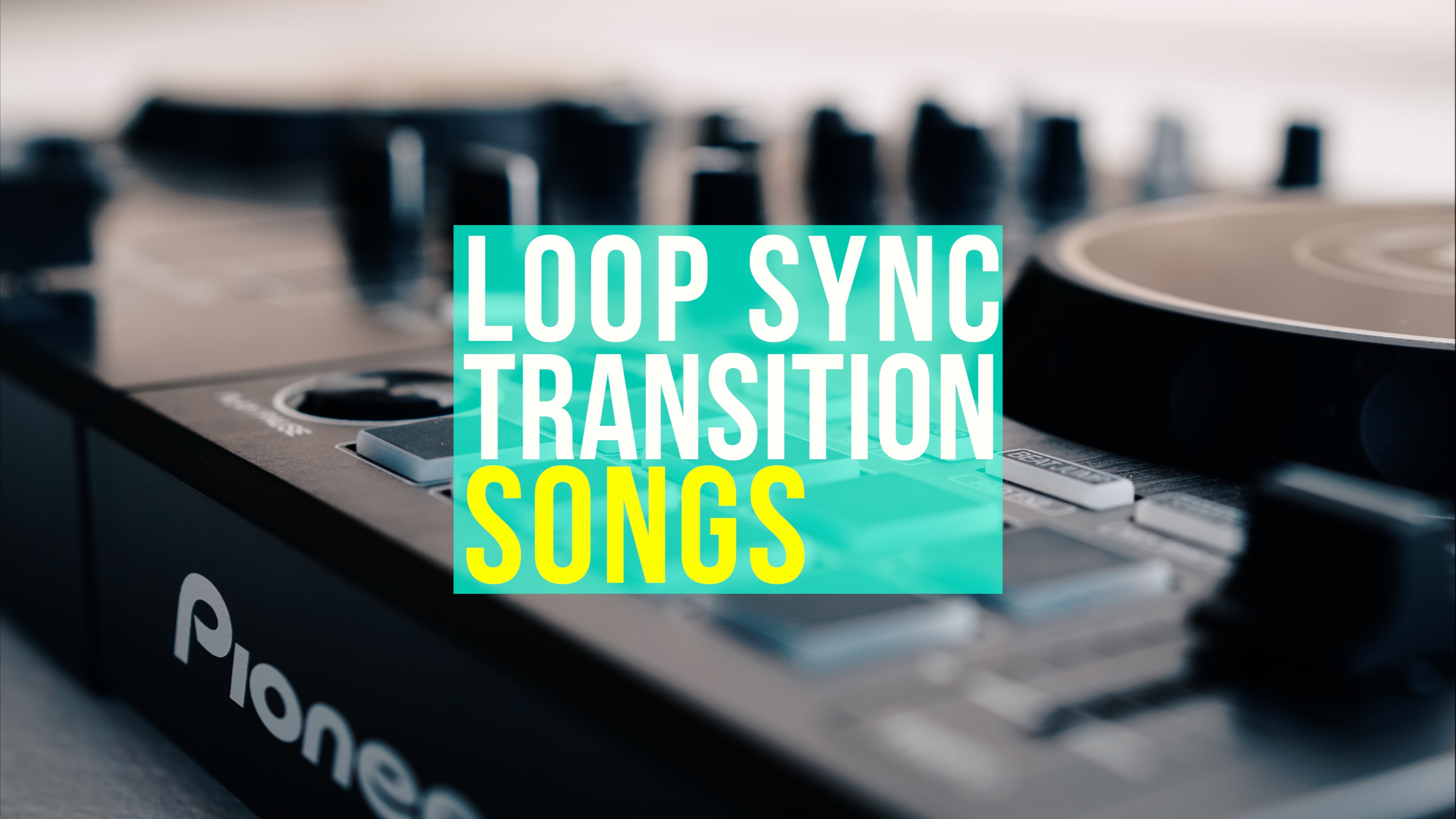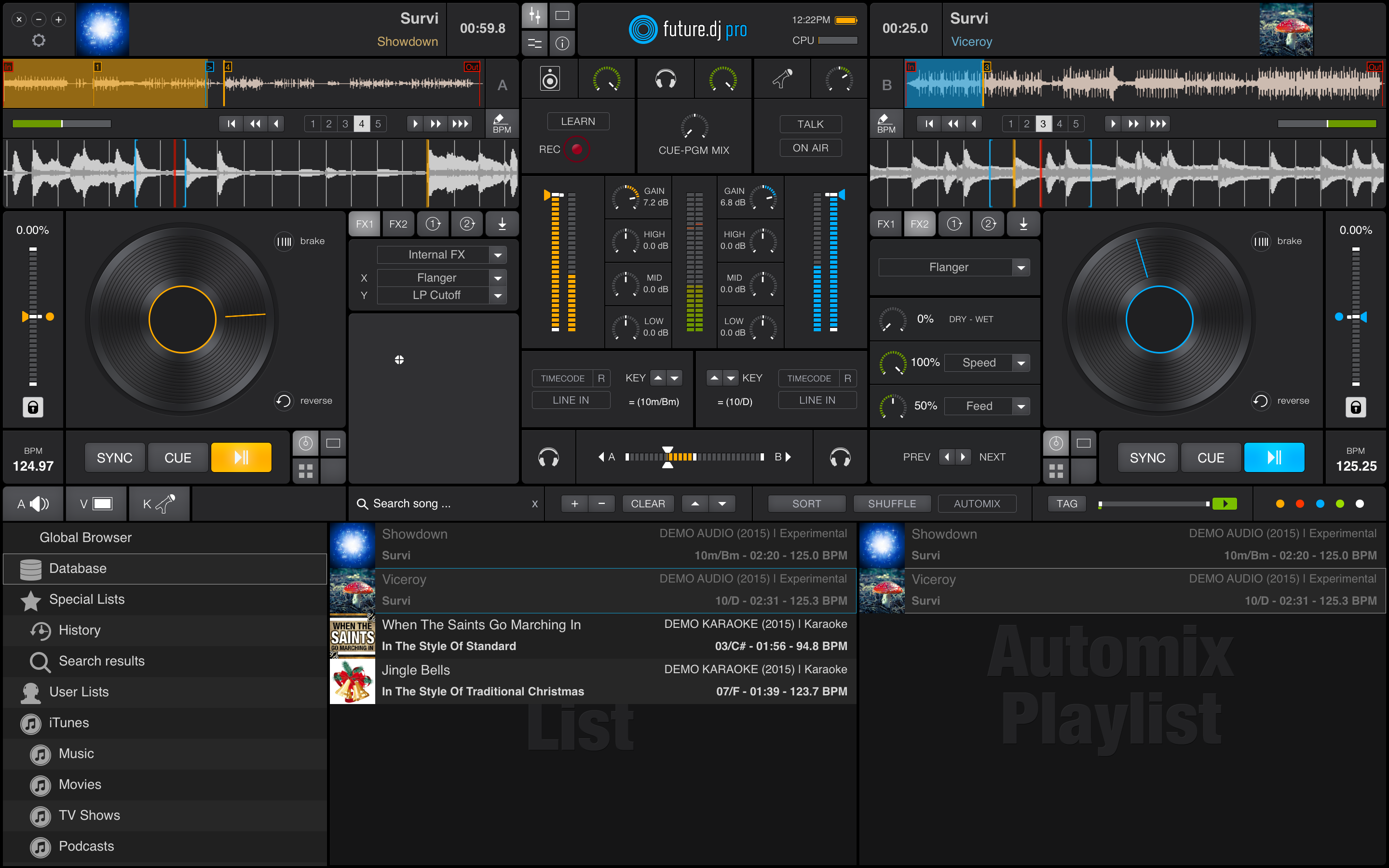
This style of music doesn’t lend itself necessarily to anything more than a confident switch from one tune to the next. This simple mixing style is very much of today, with our modern fashion for short, choppy pop, dance and hip hop singles that start with a bang and end just as abruptly. Doesn’t matter if it’s an actual beat or not, just ensure that you’re at the start of a phrase so you respect the flow of the tracks together.Īlso, it doesn’t matter if the track is of a different BPM, or even a different genre, a fact that makes the Fade a great way to help you play more interesting sets that confidently cross genres and tempos.Īll you’ve got to do is listen to music radio for long enough to get a decent handle on the end-to-end. Just as your old track is disappearing, hit play on your new track, crisply and cleanly lined up right on the first beat of a musical phrase. Start the next track playing on a downbeat, lined up with the final downbeat on your outgoing track.If you start your fade just after the beginning of, say, an eight-bar musical phrase, you’ll want to be practically done with it by the end of that phrase so you can… Over the next ten to fifteen seconds, you can continue the Fade more gradually, now everyone’s clear what’s going on. The wrong way to fade a song out is to make people ask, ‘Is this or isn’t this fading out?’ You’ve got to be bold and knock a good chunk of that volume out right away. Fade the song out quickly at first, then slowly.If that second chorus is also introduced by a key change (that other classic ‘running out of ideas’ composition technique), all the better. A chorus is a good place to fade, or even better, a chorus that follows a chorus (a common way writers pad out their songs towards the end). At times, you will do this because you played the wrong song and want to move on apologetically (hey, it happens), but usually it’ll be because you feel you’ve played enough of something that hasn’t quite ended yet, which is common especially when you’re playing older music that everyone knows.

Combined with good timing, it’s a perfectly acceptable way to move along in many types of DJ set. Done smoothly and confidently, the Fade puts control of where you switch from one tune to the next into your hands, and tells everyone you’re in command. Manually fading a song out tells the audience the current track is ending and to expect something else imminently, and of course removes a lot of the volume from the outgoing tune so that the moment the incoming tune starts, it dominates.
TRANSITIONS DJ LAPTOP HOW TO
Knowing how to fade and move on means you’ll never be stuck for a way to move to the next tune, and the confidence that gives you is priceless. like cooking and cocktail making, once you know the basics, there are countless variations, and soon enough you’ll not only be able to come up with your own ideas, but you’ll better understand and appreciate what other DJs are doing too…and be able to borrow some of their techniques for your own DJ sets.Īs a DJ tool, the Fade remains one of the best ways to move from song to song in a DJ set. Once you’ve mastered the five techniques here, you’ll be in the enviable position of not worrying about how you’re going to mix from one tune to the next (so you can worry about what matters: what to play next), and you’ll naturally start developing your style by adding your own flavours to these techniques. Combined with good ingredients (your music), confidence in your tools (your DJ gear), and a clear idea about what you’re aiming for (filling that dancefloor at the next gig you’ve got in your diary), they will get you on the field of play.

What follows won’t get you to the DMC World DJ Championships – but these DJ transitions are the building blocks for everything. Of course, knowing a secret sauce or two doesn’t make you a world-class chef, just like mastering a few cocktails doesn’t turn you into The Savoy’s next cocktail mixologist.

But it’s not: it’s about DJing, and the techniques in this chapter are truly the only ones you need to be able to play music continuously and professionally for people to dance to. If it were a book for wannabe bartenders about mixing cocktails, it’d be the five must-have ingredients and the trick to shaking properly. If this were a book about an exciting new type of cuisine, this would be the secret sauce mix.


 0 kommentar(er)
0 kommentar(er)
